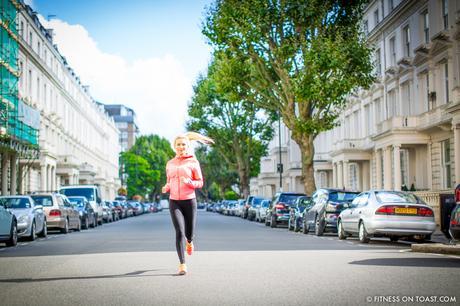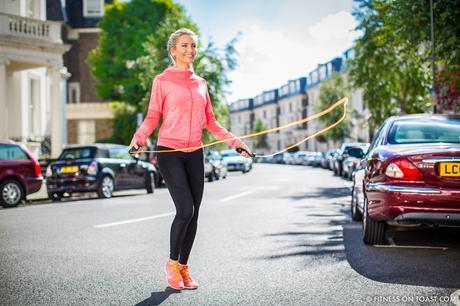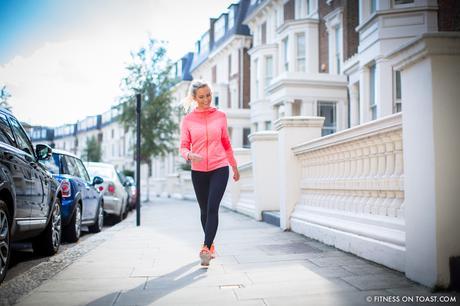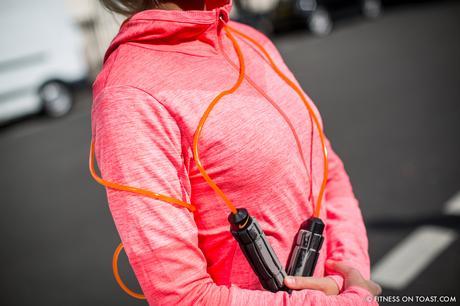 Every one of us will inevitably suffer a natural degradation of bone density as we get older; if we’re mindful of this, it’s possible to take some pretty smart measures to strengthen our skeletons now, which fit right in alongside our normal everyday fitness goals. This post highlights my top 5 ways to exercise and care for yourself in order to promote bone strength; what we can eat, and what we could avoid in order to help build a strong skeleton that’ll last us through life!
1) EAT RIGHT
This isn’t just for teeth and bones, but moreover for broader health. The body is in a constant process of self-renewal, incessantly churning out new bone, muscle, blood, skin etc. I believe that what we put into it determines the quality of its rebuild. Foods which are high in simple sugars – sweets and sodas for example – don’t just promote enamel-busting tooth decay, they can also inhibit the body from being able to absorb the bone-friendly calcium you’re consuming as well as depleting your supplies of phosphorus, both of which go to unduly reduce bone density. The same goes for salty foods which cause calcium to be lost via the kidneys.
Even if little is consumed, the body maintains calcium levels in the blood by sapping it directly from the bones, so most medical commentators suggest taking in c. 1200mg of calcium a day as a broad rule of thumb, which can be sought from (obviously) milk, yoghurt and cheese, but also more surprisingly, kale, broccoli, salmon and sardines – all staples on the Fitness On Toast recipe pages!
Every one of us will inevitably suffer a natural degradation of bone density as we get older; if we’re mindful of this, it’s possible to take some pretty smart measures to strengthen our skeletons now, which fit right in alongside our normal everyday fitness goals. This post highlights my top 5 ways to exercise and care for yourself in order to promote bone strength; what we can eat, and what we could avoid in order to help build a strong skeleton that’ll last us through life!
1) EAT RIGHT
This isn’t just for teeth and bones, but moreover for broader health. The body is in a constant process of self-renewal, incessantly churning out new bone, muscle, blood, skin etc. I believe that what we put into it determines the quality of its rebuild. Foods which are high in simple sugars – sweets and sodas for example – don’t just promote enamel-busting tooth decay, they can also inhibit the body from being able to absorb the bone-friendly calcium you’re consuming as well as depleting your supplies of phosphorus, both of which go to unduly reduce bone density. The same goes for salty foods which cause calcium to be lost via the kidneys.
Even if little is consumed, the body maintains calcium levels in the blood by sapping it directly from the bones, so most medical commentators suggest taking in c. 1200mg of calcium a day as a broad rule of thumb, which can be sought from (obviously) milk, yoghurt and cheese, but also more surprisingly, kale, broccoli, salmon and sardines – all staples on the Fitness On Toast recipe pages!

 2) DRINK LESS
Regularly blitzing the recommended alcohol limits is unhelpful for most bodily functions, but it also has a direct effect on decreasing your bone mass. Apart from the heightened chance of goofing around and falling to fracture limbs, large amounts of alcohol can be toxic to ‘osteoblasts’ https://en.wikipedia.org/wiki/Osteoblast (the cells which synthesise new bone). Furthermore, other sorts of drinking can be unhelpful, as too much caffeine is also thought to leach calcium from the bones and thus reduce their strength, as well as causing unsightly staining to the teeth and enamel degradation – reducing the amount of caffeine daily should do the job! Likewise, fruit juices consumed through straws should help reduce the amount of decay.
2) DRINK LESS
Regularly blitzing the recommended alcohol limits is unhelpful for most bodily functions, but it also has a direct effect on decreasing your bone mass. Apart from the heightened chance of goofing around and falling to fracture limbs, large amounts of alcohol can be toxic to ‘osteoblasts’ https://en.wikipedia.org/wiki/Osteoblast (the cells which synthesise new bone). Furthermore, other sorts of drinking can be unhelpful, as too much caffeine is also thought to leach calcium from the bones and thus reduce their strength, as well as causing unsightly staining to the teeth and enamel degradation – reducing the amount of caffeine daily should do the job! Likewise, fruit juices consumed through straws should help reduce the amount of decay.
 3) EXERCISE APPROPRIATELY
Movement and gentle impact can help to build bone strength, as well as any weight-bearing activity that makes us work against gravity! Thankfully that covers a huge number of active pursuits, but some of the most commonly recognised forms are:
3) EXERCISE APPROPRIATELY
Movement and gentle impact can help to build bone strength, as well as any weight-bearing activity that makes us work against gravity! Thankfully that covers a huge number of active pursuits, but some of the most commonly recognised forms are:
- skipping
- power walking
- dancing
- hiking
- stair climbing
- tennis
- jogging
- aerobics classes / boxercise / circuit training
- weight training
The beauty of the above is that your average day in the office might well dictate regularly climbing 4 flights of stairs (instead of the lift), and a 15 minute walk in the city to fetch your lunch (take the extra 10 mins, why not). Then if you’re able to manage 10-15 minutes of skipping at home each night, you’re really hitting that ’30 minutes a day’ activity target!
 4) VITAMIN D
Essential to help body absorb the calcium you’re consuming via diet. It’s hard to synthesise, and is broadly produced when our skin is exposed to daylight and even more so in direct sunlight. There’s a perceptible mood effect too, which helps to bolster the overall sense of wellbeing!
4) VITAMIN D
Essential to help body absorb the calcium you’re consuming via diet. It’s hard to synthesise, and is broadly produced when our skin is exposed to daylight and even more so in direct sunlight. There’s a perceptible mood effect too, which helps to bolster the overall sense of wellbeing!
 5) DENTAL CARE
This is super important to me; growing up in Sweden, there’s a real focus on oral hygiene, as part of the national identity almost! A proper toothcare regime will help keep these exposed squares of bone in good order for life.
5) DENTAL CARE
This is super important to me; growing up in Sweden, there’s a real focus on oral hygiene, as part of the national identity almost! A proper toothcare regime will help keep these exposed squares of bone in good order for life.



